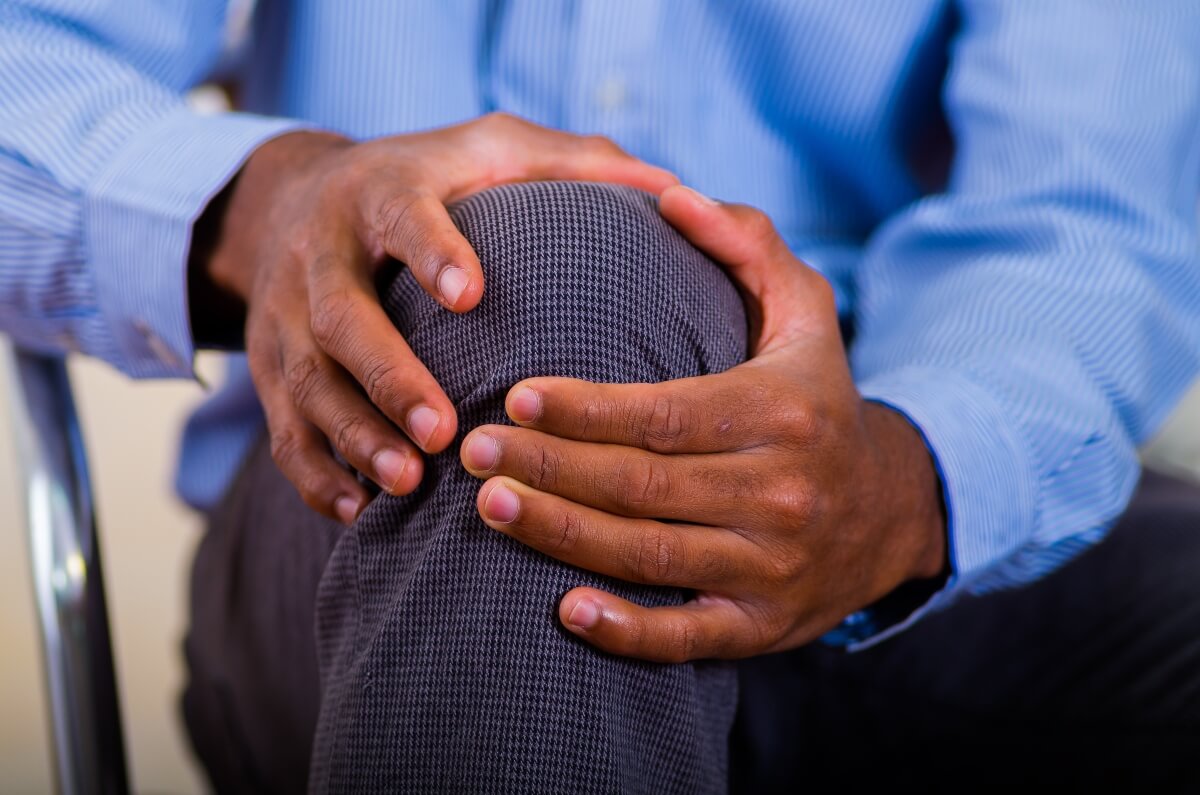Neuropathy is a common, painful and potentially debilitating condition that many people live with, and coMra therapy offers a non-invasive, pain-free and drug-free solution to help treat various types of neuropathy, neuralgia, and nerve pain.
Healing from Neuropathic Pain with coMra Therapy
Neuropathy is a common, painful and potentially debilitating condition that many people live with, but there is a solution. coMra therapy offers non-invasive, pain-free and drug-free treatment protocols to help manage various types of neuropathy, neuralgia and nerve pain.
NEUROPATHY HAS MANY DIFFERENT CAUSES
Neuropathy (nerve damage) is often associated with diabetes, but there are many other underlying conditions that can cause neuropathy to develop.
Neuropathy occurs when the nerves that carry information between the brain and the spinal cord are damaged, or affected by a disease. It is characterised by pain, swelling, tingling, weakness and numbness, often in the hands and feet.1
Neuropathy may affect the motor, sensory or autonomic nervous system.1 There are many underlying causes that can lead to this type of damage, in one nerve group or multiple nerve groups. These include:
- Physical injuries or accidents, like a car crash or a fall, which can cause physical trauma to the body and put added pressure on the nerves.1
- Systemic illness like diabetes, blood disorders, or liver and kidney conditions, which can cause nerve damage over time.1
- Infections, where a certain virus or bacteria directly attacks the nerve tissue.1
- Autoimmune diseases (such as lupus), which often cause chronic inflammation throughout the body, damaging the tissues.1
- Side-effects from some common prescription medications (this is known as drug-induced neuropathy).1,2
LOW LEVEL LASER THERAPY PROVIDES MULTI-FACETED TREATMENT
Low level laser therapy (LLLT) has been shown to help significantly reduce and manage neuropathy, neuralgia and nerve pain.3-7 LLLT helps in a multi-faceted way because of its many healing benefits, including:
- Triggering biochemical changes in the body’s cells, to help heal damage.
- Regenerating nerve tissue and improving nerve function.
- Increase of the vascular network.
- Promoting injury recovery.
- Reducing pain and inflammation.
- Treating or managing underlying conditions such as diabetes and autoimmune diseases.
- Promoting healing of other tissues, to reduce scar tissue on injury sites.
- Providing systemic support.
A coMra device does all this in a non-invasive way, and without adding any more medications into the system.
There are different coMra protocols you can use to treat neuropathy, neuralgia and nerve pain, whether you’re targeting a specific condition or treating an underlying cause.
coMra PROTOCOLS FOR PHYSICAL TRAUMA RECOVERY
SURGERY 2:
- Treats traumatic wounds that can lead to neuropathy down the line.
- Reduces scar tissue, which can reduce the pressure on the nerves in the scarred area.
SURGERY 3:
- Treats swelling and inflammation of tissue.
- Protocol is used together with UNIVERSAL 3.

- Treats radiculopathy – damage to the nerve roots in the spine.
- Treats sciatica – damage to the sciatic nerve, which causes pain, weakness or numbness.
NEUROLOGY 4:
- Treats neuropathy and neuralgia in the trigeminal nerve (a cranial nerve in the head).
NEUROLOGY 16:
- Treats post-herpetic neuralgia – lasting pain caused by shingles.
NEUROLOGY 17:
- Treats complex regional pain syndrome (CRPS) – a type of chronic pain, often affecting the limbs.
- CRPS may develop after a physical injury, a surgical procedure, or a medical event like a stroke or heart attack.
- Treats post-traumatic neuralgia – nerve pain or damage caused by physical trauma.
coMra PROTOCOLS FOR BRAIN AND NERVOUS SYSTEM DISORDERS
NEUROLOGY 3
- Treats facial nerve neuropathy.
NEUROLOGY 14
- Treats optic neuropathy, as well as several other eye disorders.
NEUROLOGY 15
- Treats diabetic neuropathy, as well as neuropathy of other causes.
- Part 1 of the protocol targets the legs and feet.
- Part 2 of the protocol targets the hands.
- In cases of diabetes, this protocol is used together with ENDOCRINOLOGY 1, to help manage the diabetes itself.
coMra PROTOCOLS FOR AUTOIMMUNE CONDITIONS
IMMUNOLOGY 1:
- Treats autoimmune conditions, including Lyme disease and lupus.
- Can be used in cases of systemic lupus and drug-induced lupus.
- Protocol used together with UNIVERSAL 5 (somatic biostimulation routine) and UNIVERSAL 3 (blood).
coMra PROTOCOLS FOR SYSTEMIC TREATMENT
UNIVERSAL 7:
- Works on the nervous system.
- Helps with recovery from neurological disorders.
- Part 1 of the protocol targets the sternum, brain and adrenal glands.
- Part 2 of the protocol targets key arteries.
UNIVERSAL 3:
- Works on the blood (circulatory system).
- Promotes general wellbeing.
- Targets 5 different pairs of arteries.
- This treatment can be used to relieve drug-induced neuropathy, as well as other types of pain.
UNIVERSAL 5:
- A somatic biostimulation routine.
- Treats exhaustion, lethargy, stress and adrenal dysfunction.
- Targets the brain, the sternum and the adrenal glands.
- Can be used to help treat drug-induced neuropathy.
UNIVERSAL 8:
- Detoxification treatment.
- Targets key organs and arteries.
- Can be used to help treat drug-induced neuropathy.
coMra CLIENT TESTIMONIALS
I am using my coMra palm on my toe areas at night as I suffer from neuropathic pain. It is helping. If you can, I would recommend this device – a little pain healer miracle! – Kgaogelo
Have had mine for 2 weeks and already noticing an improvement in nerve pain in my feet, rhinitis, bursitis inflammation and have used it for headaches. Highly recommended! – Claire
For more information on how to use the protocols mentioned here, download our latest coMra User Guide.
References:
1 Carey E. Peripheral neuropathy. Healthline. 2021.2 Jones MR, Urits I, Wolf J, et al. Drug-induced peripheral neuropathy: a narrative review. Curr Clin Pharmacol. 2020;15(1):38-48. doi:10.2174/1574884714666190121154813 3 CG SK, Maiya AG, Hande HM, et al. Efficacy of low level laser therapy on painful diabetic peripheral neuropathy. Laser Ther. 2015;24(3):195-200. doi:10.5978/islsm.15-OR-124 Abeer A. Yamany, Hayam M. Sayed. Effect of low level laser therapy on neurovascular function of diabetic peripheral neuropathy. Journal of Advanced Research. 2012;3(1):21-28. 5 Shen C, Yang Y, Huang T, et al. Low-level laser-accelerated peripheral nerve regeneration within a reinforced nerve conduit across a large gap of the transected sciatic nerve in rats. Evidence-Based Complementary and Alternative Medicine. 2013;1-12.6 de Oliveira Rosso M, Buchaim D, Kawano N, et al. Photobiomodulation therapy (PBMT) in peripheral nerve regeneration: A systematic review. Bioengineering 2018, 5(2), 44;7 Zang K, Kroleski J, Askari S, et al. Can low-level laser therapy have an impact for small fiber neuropathy? Podiatry Today. 2011.




